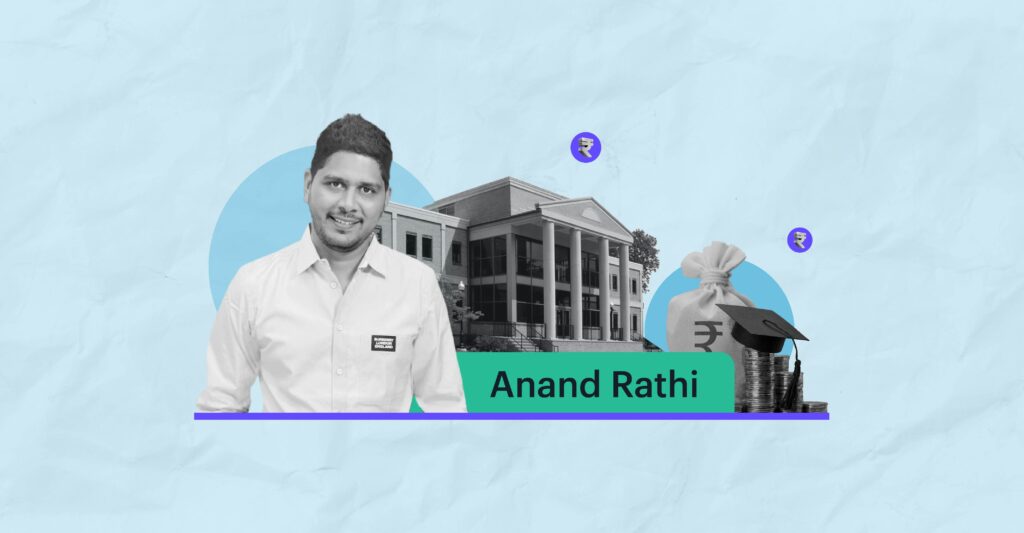Last Updated on Aug 24, 2022 by
This article is authored by Anand Rathi, an Investment Manager with over 19 yrs of experience in managing HNI wealth. Founder Partner for Augment Capital Services LLP with over Rs. 400 cr. of AUM.
We always want the best for our children as parents, especially when it comes to their education. But children’s education can be expensive due to the sharp increase in the fees charged by educational institutions, which is worrisome. So, are you making sufficient investments for your child’s education?
It is essential to prepare in advance to make this journey simple and manageable. This has prompted many parents to look into different investment opportunities in order to pay for their children’s education.
Table of Contents
Why is financial planning for your child’s education necessary?
1. College education is expensive: Depending on the course, the current cost ranges from Rs. 3 to 9 lakh per annum, or Rs. 14 to 40 lakh overall (including hostel, books, and fees.)
2. Regular increase in cost: Every year, the price of college rises by around 10%.
3. Education options are increasing: With the increasing aspirations of your child, you should be financially ready as a parent to support them.
4. The joining date cannot be changed: Unlike other financial goals, there cannot be any change in the timelines of education.
Investment strategies as per the age of your child
1. 0 to 5 yrs
You have approximately 10 to 15 yrs left to arrange your investment at this point. Equity should make up a larger portion of your ideal asset portfolio because it is better suited for long-term investing.
- Option 1: Smart asset allocation
Healthy allocation between equity, debt and hybrid
- Option 2: Government schemes
You can consider the Sukanya Samriddhi Yojana Scheme (for a girl child), which qualifies for both a Section 80C exemption and a tax-free return. This scheme has 21 yrs lock-in period.
2. 6 to 15 yrs
You now have 5 to 10 yrs to plan your investment. Your risk tolerance has decreased, so you should ideally create an equity and debt portfolio that is split 50:50.
- Option 1: Create a Systematic Investment Plan (SIP) for a longer period of time. Investing the same amount each month can produce a decent return on your investment and fulfil your planning. If you fall into a higher tax bracket, you can even choose an ELSS fund.
- Option 2: Semi-annual or annual review
To make sure your investments are in accordance with your goals, you should check and track their performance on a regular basis. You can use this to determine whether you need to make additional or less investments to build the corpus you want.
3. 15 yrs and above
You still have a few years until you actually need the money. Therefore, it would be wise to start concentrating on asset protection rather than expansion.
- Option 1: Prioritize capital protection.
Keep the money in debt funds and other fixed income instruments, such as FDs, for the time being. Recalibrate your investment portfolio gradually in favour of fixed income or debt as you get closer to your goal.
- Option 2: Avoid withdrawals from your retirement fund.
Also, avoid the temptation to borrow against your retirement account, which you need to ensure your personal security in the future.
Final words of suggestions and advice
1. Start saving early
Starting early will provide you with an advantage because it will require less money upfront, which will be easier on your finances. Given that money is compounded, this is quite advantageous. Starting early has a greater multiplier effect; thus, it is advisable to take advantage of this benefit.
2. Discipline your spending
Understanding that saving money is the ground of financial planning is crucial. Your capacity to preserve money even during difficult times is key to achieving your long-term goals. Adopting a disciplined approach to saving a specific amount each month is unquestionably required for this.
3. Focus on high-return investments
Inflation is a crucial element to take into account when deciding how to fund your children’s education. Keeping this in mind, it is strongly advised to invest in high-return assets that offer inflation protection. Additionally, while making a long-term investment like this, you should concentrate on investments with a modest level of risk because they won’t be affected by occasional market swings.
4. Get a life insurance cover
Having a life insurance policy in place for yourself is as crucial as investing. Even without you, this life insurance will secure your family’s finances and support your child’s future aspirations.
5. Diversify portfolio
Investments in various financial outlets are advised for better money management since they balance risks and offer higher rewards. Ideally, your portfolio should mostly consist of equity-oriented investments like mutual funds, Child ULIPS, and Public Provident Funds for your child’s education.





